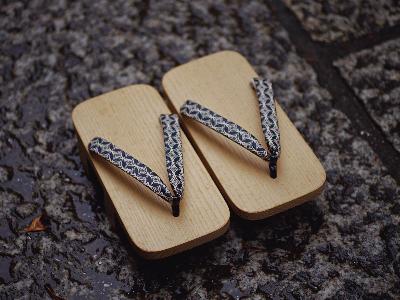|
Paulownia geta are Japanese wooden clogs made from expensive Aidu paulownia in Fukushima Prefecture.
Aidu domain traditionally encouraged people to plant paulownia. Aidu paulownia is highly valued because of its beautiful grain and strength, a result of the Aidu's uniquely severe climate.
Sticky and glossy, silvery white wood, beautiful straight grain, high-density, clear annual rings and hardness; these are Aidu paulownia's characteristics. Paulownia geta make the best use of Aidu paulownia. Straight-grained wood that is glossy and beautiful is said to be the best.
Paulownia is light and absorbent. The white grain is pleasant and the geta are comfortable to wear. The 'karan karan' sound of paulownia geta is also airy and fresh.
In 1997, the making of paulownia geta was designated as a Fukushima Traditional Handicraft.
Aidu domain traditionally encouraged people to plant paulownia. Aidu paulownia is highly valued because of its beautiful grain and strength, a result of the Aidu's uniquely severe climate.
Sticky and glossy, silvery white wood, beautiful straight grain, high-density, clear annual rings and hardness; these are Aidu paulownia's characteristics. Paulownia geta make the best use of Aidu paulownia. Straight-grained wood that is glossy and beautiful is said to be the best.
Paulownia is light and absorbent. The white grain is pleasant and the geta are comfortable to wear. The 'karan karan' sound of paulownia geta is also airy and fresh.
In 1997, the making of paulownia geta was designated as a Fukushima Traditional Handicraft.
| [+ADDRESS] | 
|













